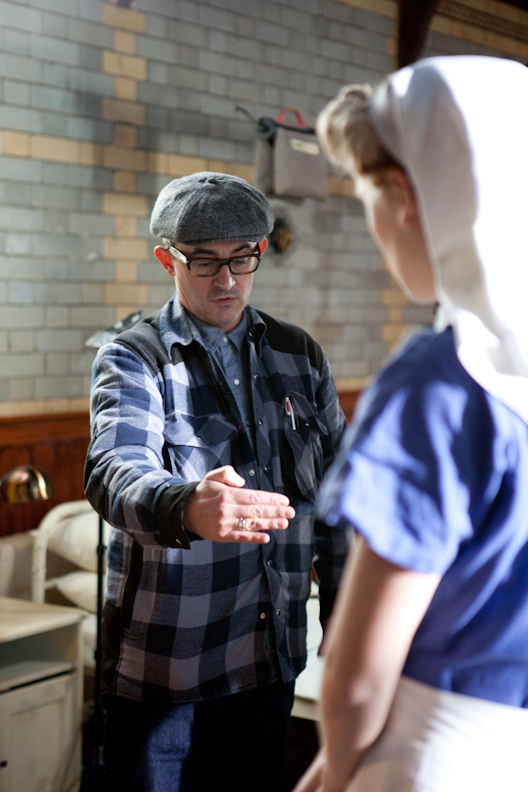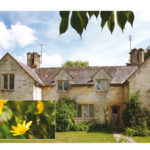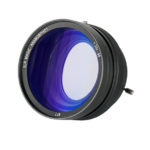
Patient 39
Posted on Feb 10, 2014 by Alex Fice
Patient 39 Director of Photography, Oliver Schofield.Patient 39 Director of Photography, Oliver Schofield, has worked with Writer/Director Dan Clifton on a number of projects. Through close discussion with Dan and careful use of the latest camera technology, Oliver created a unique look and feel for Patient 39. Here, he discusses the lenses he used for the production.
Dan first mentioned his idea to adapt William Boyd’s short story ‘Ghost of a Bird’ at a meeting for another production. It was only a brief chat and initial exchange of ideas, but I remember being very keen to get on-board, even at this early stage, as I love shooting period drama.
Set in a British military hospital during WW2, PATIENT 39 is the simple but moving story of the relationship between Doctor Moran (played by Mark Bazeley) and a wounded soldier known only as Patient 39.
 The patient in question.
The patient in question.
The young patient (played by Alfie Stewart) enters hospital with a serious head wound, an unknown soldier with no memory and only a fragmented sense of self and the world around him. As the enigmas of Patient 39’s identity begin to unravel, a gentle friendship begins to grow between patient and doctor. Unlike Moran, who clings to scientific precision, Patient 39 lives in his imagination, moved by beauty and the power of images. Inspired by their friendship, Moran begins to see the world in a new kind of way.
As time passed Dan and I talked more and more about the shape of the film. There was a need to make it as simple as possible, allowing shots to be held and not cut into too much. It was also important that I created a look and feel that was cinematic without being too modern and distracting from this gentle tale set in a military hospital shortly after the D-day landings.
From our discussions, it emerged that the most important quality for the film was to capture an internal sense of Patient 39’s fragmented consciousness and memory, and how, as he starts to recover, a relationship begins to form between him and Dr Moran. So we developed a number of ideas for internal, POV type shots that would give a heightened sense of his state of mind. At the same time there needed to be a transition in the brief space of the film to a more elegiac feel.
Although the camera would have to be digital, I made it my main priority to use lenses that would help me with the look I wanted to achieve, and I spent some time testing various lenses. I think that you can never test lenses enough; there is always something new to be found when you actually get them on the camera and start introducing light that is specific to the project you have in mind.
 “We shot for three days in March at Avenue House, a large house in Finchley in North London.”
“We shot for three days in March at Avenue House, a large house in Finchley in North London.”
However, after a fair amount of testing, I discovered that Schneider had just released a third version of their Cine Xenar primes. I have always loved the way that Schneider lenses, old and new, give a soft, natural feel with just enough flare to use if it’s needed. Although there were none available for rent in London at the time, I contacted the lovely people at Schneider directly and a full set arrived the afternoon before we started principal photography – we were really grateful to them for that.
I was also after a lens set to use for the sections of the script that take place ‘inside the mind’ of the invalid solider, Patient 39; something a little softer than the Schneiders and easy to handle as I would be using them loose in the hand to give the POV shots an added dimension. The Canon K-35 primes fitted the bill perfectly and gave me a fantastic flare and contrast of image, subtly different to the CX3s.
Dan comes from the world of documentaries and so has a fast and fluid way of working. I wanted to have a good plan for the shoot, but also to be open to whatever happened with the actors on set and to be able to capture that. We shot for three days in March at Avenue House, a large house in Finchley in North London. Though most of the action is interior, the story relies crucially on blue sky, so when it began to snow our hearts sank. Fortunately Visual Effects Supervisor Justin Cornish of Atomic Arts was able to step in to do some sky replacements.
Short films all have challenges, just as fully funded commercial projects do. However, low budget projects like short films seem to inspire cast and crew alike meaning the level of drive and commitment shown on set is often heightened, and Patient39 was no exception. It reminded me of a work ethic more a kin to shooting film and, as I have been solely shooting HD since the arrival of the Alexa, it’s been a while but as time was tight we had to be extremely organised and disciplined.
 Writer/Director Dan Clifton on-set.
Writer/Director Dan Clifton on-set.
I was very impressed with the way the whole team pulled together to create Dan’s vision on screen. I thought that the Production Design team lead by Sophia Manske were especially good; it’s always a relief to have a beautiful set to work in as it makes my job so much easier! Gaffer Tim O’Connell, Grip Phil Murray and I have worked on many short film projects together over the years. It was great to have Fabrizio Accettulli next to me as focus puller and he ended up operating while Marcus Autelli also moved up to focus pulling from assistant.
I think it’s important that crew members feel that they have progressed somehow and really learnt something on a short as the money is always so tight. It’s a kind of payment that is somehow more important than financial gain! Short film sets are a great place for me to find new faces and know where to go when my regulars move on or are unavailable. All these talented folks are now on my list of possible crew members for the future, if they weren’t already!
Grading and post production were completed at Halo Post with colourist Ross Baker. Ross worked to provide a signature look for the internal, psychological sequences, distinguishing them from the more naturalist scenes, as well as to provide a distinctive feel for Patient 39’s memory flashbacks that prove a turning point in the story. These were shot at 1600 ASA on the Alexa at 2k 4:4:4:4 Apple ProRes and came up nicely; not as noisy as I’d thought.
The rest of the film was shot at 640 ASA which reduced the grain a little although I had to be careful with my highlights and bright spots. A Schneider Rotating Polarizer was used on everything which enabled me to adjust a fair amount of reflections and backlight brightness quickly in camera rather than constantly moving, gelling or dimming the lights. This is incredibly important when resources are tight and the sun is going down! With the help of a supportive post house all this time and effort was harnessed perfectly.
All in all I had the pleasure of working with a really great bunch of people on Patient 39; they became a tight-knit unit over the space of a few days even though most of us had never worked together before. I’m looking forward to seeing how audiences receive it.
For the last 15 years Oliver has worked as a Director of Photography on feature films, documentaries and channel idents including projects for Channel 4, Discovery, ITV and BBC.







